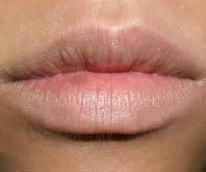
Hope you don't makeup (1) your mind before you read this thing.
Of all the scares that we debunk, perhaps no one is dumber than whatever appears on the Skin Deep Cosmetics web page, which, just by coincidence happens to be run by the Environmental Working Group—the perennial winner of the "Worst Science Site in the Galaxy" award. These jokers somehow find it within themselves make even the NRDC look like an All Star Team of Nobel Prize winners. Not so easy.
EWG cares a whole lot about your skin. So much so that they pretty much want you avoid putting anything on it. For example:
- In the Perfume, cologne, and body spray category, they advise you to avoid: “Fragrance” (listed as an ingredient)"
Comment: If I have this straight, EWG wants you to wear perfumes that have no fragrance. OK, that sounds reasonable enough. Let's move on.
- For nail polish, they suggest, among other things: "Skip polish."
Comment: Yep- there's a pretty good chance that you won't be exposed to nail polish if you don't use nail polish. Also a pretty good chance that you will have fewer gastrointestinal problems if you don't swallow a chainsaw.
And just so you know who you're dealing with, check out this odious product, at least according to EWG:
What could possibly be wrong with enamel strengthening toothpaste in a pretty box? Well, it's this, courtesy of the EWG website.

To be fair, the group does concede that fluoride in water does help prevent cavities. On the other hand, they have some unflattering things to say about it:
- Fluoride exposure causes neurochemical and biochemical changes in the brains of laboratory animals
- Three human epidemiological studies and two long-term animal studies found a link between fluoride and bone cancer
- The American Dental Association recommends fluoride-free toothpaste for children under 2.
Maybe so, but the American Academic of Pediatrics disagrees:
"Fluoridated toothpaste is recommended for all children starting at tooth eruption, regardless of caries risk."
But it's lipstick that EWG really dislikes. Given the scientific competence demonstrated above, feel free to draw your own conclusions about the group's credibility. Here are some of the things they have to say about lipstick.
Oxybenzone:
- "EWG found oxybenzone in almost 600 sunscreens sold in the U.S. We also found it in lip balm, lipstick, moisturizers and fragrance for women."
- "This so-called "natural" sunscreen contains at least ten compounds that do not occur in nature. Most are made from petroleum."
Comment: Aha! The big lie—that it matters whether oxybenzone comes from whether it be from a tree, petroleum (intentional used scare word), or tectonic plates on Pluto makes NO difference. EWG either knows this and is lying, or is even dumber that we thought.
Methylparaben:
- Methylparaben is in the paraben family of preservatives used by the food, pharmaceutical, and personal care product industries. Parabens mimic estrogen and can act as potential hormone (endocrine) system disruptors.
Comment: You would have to search long and hard to find a safer chemical than methylparaben. No LD50 has been established in animals because it is impossible to find a dose high enough to kill one. It's NFPA (2) hazard classification is category one: "Exposure would cause irritation with only minor residual injury." This puts it into the same category as other hideous monsters such as sugar, glycerin, and vitamin C.
As far as the endocrine disruptor nonsense, it is just that—nonsense. Methylparaben binds so weakly to estrogen receptors, and there is so little of it in your body after using lipstick that that chances of it doing anything harmful are a bit below zero.
Lead:
With modern analytical instrumentation it is possible to detect chemicals in such low amounts that it is almost surreal. These same chemical, needless to say, have been around all along, but now we're able to see them.
- Popular Lipsticks Contain Dangerous Levels of Lead:
U.S. Food and Drug Administration researchers have detected lead in 400 brands of lipstick tested by the agency. At least two popular brands had amounts of the neurotoxin above the threshold the state of California considers safe in personal care products, which is 5 parts per million.
Comment: Is this anything to worry about? Granted this is anecdotal, but I have actually seen cases of living women walking around New York wearing lipstick. Come to think of it, women have been wearing the stuff for years, and I have never found a shortage of them ready to reject me. So it can't be that bad, right?
Let's check in with the FDA:
"Is there a safety concern about the lead levels FDA found in lipsticks?"
"No. We have assessed the potential for harm to consumers from use of lipstick containing lead at the levels found in both rounds of testing. Lipstick, as a product intended for topical use with limited absorption, is ingested only in very small quantities."
So, there ya go. Another phony scare from a phony science group. But just because we stand up for science doesn't mean that we're not nice people, so I'd leave a little sign of affection for EWG. Happy Holidays!
Happy Holidays!
Oops. Forgot..
. That's better.
That's better.
Go ahead. Pucker up under the mistletoe. Which, by the way, happens to be an actual poison.
Note:
(1) That was pretty bad, right?
(2) The National Fire Prevention Association (NFPA) keep safety data sheets so that responders know what they're dealing with if there is a fire or chemical spill. They group chemicals into five categories, depending on similar toxocity. Zero means no risk (water). Five mean you should get your affairs in order.




